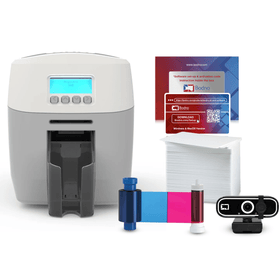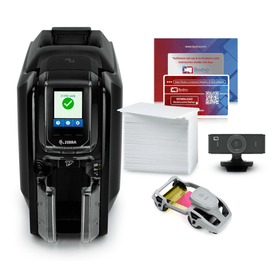In today's world, ID cards are an essential part of our daily lives. From accessing buildings to verifying our identity in various transactions, these small but significant items have come a long way. This blog explores the fascinating journey of ID cards, tracing their evolution from simple laminated paper to sophisticated smart cards.
Early ID Cards
The first forms of ID cards were simple, often handmade, and laminated paper cards. These cards typically featured basic information such as name, photograph, and signature. The primary purpose was straightforward: to provide a visual means of identification. However, these early ID cards had significant limitations. They were easy to forge, susceptible to damage, and lacked advanced security features.
Historically, these early ID cards were used in various contexts. For example, employee badges in factories during the early 20th century, or identification papers during wartime. These cards were essential in an era when other means of identification were limited, despite their shortcomings.
The Transition to Plastic ID Cards
As technology progressed, the transition from laminated paper to plastic ID cards marked a significant improvement. Plastic offered several advantages: it was more durable, less prone to damage, and harder to forge. This transition was driven by the need for more secure and long-lasting identification methods.

The advent of advanced printing techniques allowed for better design and security features, such as holograms and watermarks, to be incorporated into plastic ID cards. These innovations made plastic ID cards popular in various sectors, including education, healthcare, and government. Schools issued student ID cards, hospitals used them for patient identification, and governments started using plastic cards for driver's licenses and national IDs.
The Rise of Magnetic Stripe Cards
The introduction of magnetic stripe technology in ID cards was a game-changer. Magnetic stripes could store data, allowing for greater functionality and security. This innovation enabled the use of ID cards in access control and financial transactions, expanding their utility beyond simple identification.

Magnetic stripe cards became ubiquitous in industries requiring secure access and verification. They were used in hotel key cards, bank cards, and employee access badges. Despite their advantages, magnetic stripe cards also faced security challenges, such as data skimming and cloning.
The Advent of Smart Cards
Smart card technology represented the next significant leap in the evolution of ID cards. These cards featured embedded microchips capable of storing and processing data. Smart cards come in various types, including contact, contactless, and hybrid cards.
Smart cards offer enhanced security features such as encryption and multi-factor authentication, making them highly secure. Their applications are vast, including banking, transportation, healthcare, and secure access control. For example, contactless smart cards are used in public transportation systems for quick and efficient fare payment.

The Role of Biometrics
The integration of biometric data into ID cards has further revolutionized security and personalization. Biometrics use unique physical characteristics, such as fingerprints, facial recognition, and iris scans, to verify identity.
Biometric ID cards offer an unparalleled level of security, making it extremely difficult for unauthorized individuals to gain access. Governments and organizations worldwide have adopted biometric ID cards for enhanced security in areas such as border control, secure facility access, and financial transactions.
Future Trends in ID Card Technology
The future of ID card technology looks promising, with emerging technologies poised to bring even more advancements. Innovations like blockchain technology could provide decentralized and tamper-proof identity verification. Quantum cryptography might offer unprecedented levels of security, making ID cards virtually immune to hacking.
As these technologies evolve, we can expect ID cards to become even more secure, multifunctional, and integrated into our daily lives. The next generation of ID cards will likely continue to push the boundaries of what is possible, ensuring that our identities remain secure in an increasingly digital world. To read more about the future of ID Security take a look at our article on The Future of ID Card Printing Technology
The evolution of ID cards from laminated paper to smart cards highlights the incredible advancements in technology and security. These small but powerful tools have transformed how we verify identity, access services, and protect sensitive information. As we look to the future, the continued evolution of ID card technology promises even greater innovations, ensuring that our identities are safeguarded with the highest level of security and efficiency.
Visit Bodno For all your ID Card Printing needs including ID Printers, ID Cards, and ID card printing supplies!

















